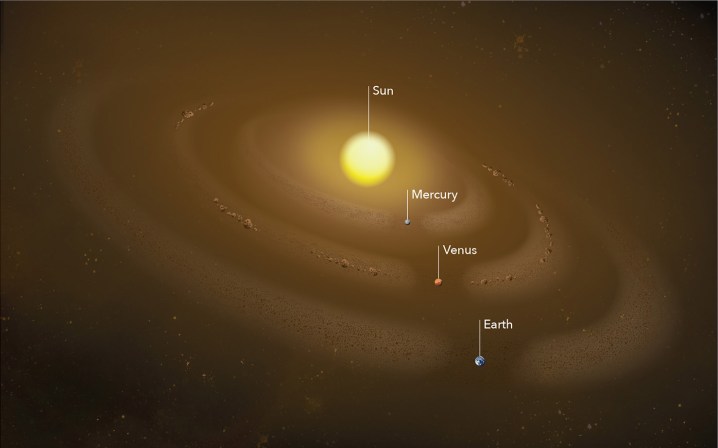
Dust turns up everywhere — on bookshelves, under the sofa, and now, apparently, in rings around Mercury. Astronomers have made a surprising discovery, finding a ring of cosmic dust in an unexpected place in our solar system.
Solar scientists Guillermo Stenborg and Russell Howard from the Naval Research Laboratory in Washington, D.C. did not set out looking for dust. Just the opposite — they were looking for a dust-free region close to the Sun in preparation for the explorations performed by the Parker Solar Probe. Scientists believe there should be a region close to the Sun where the heat from the star would vaporize any dust, and finding the edge of this region would tell us more about what cosmic dust is made of and how planets formed in a young solar system.
Instead, Stenborg and Howard stumbled across a “fine haze of cosmic dust” sprinkled across the orbit of Mercury, which forms a ring that is 9.3 million miles wide. Mercury itself is only 3,030 miles wide, so it floats through a vast sea of dust as it moves around the Sun.
“We’re not really dust people,” Howard said in a statement. His team was trying to remove the effects of dust from images so the Parker Solar Probe can see the Sun more clearly. “The dust close to the Sun just shows up in our observations, and generally, we have thrown it away.” But this time, they realized the dust they were trying to scrub away was far denser and more prevalent than they had expected.
It hadn’t previously occurred to scientists that there could be a dust ring around Mercury, so no one had to thought to look for one before. “People thought that Mercury, unlike Earth or Venus, is too small and too close to the Sun to capture a dust ring,” Stenborg said. “They expected that the solar wind and magnetic forces from the Sun would blow any excess dust at Mercury’s orbit away.”
Now Howard and Stenborg will pass the challenge of investigating Mercury’s dust ring to “dust people,” and will focus back on searching for the dust-free zone as the Parker Solar Probe explores the Sun’s corona.




